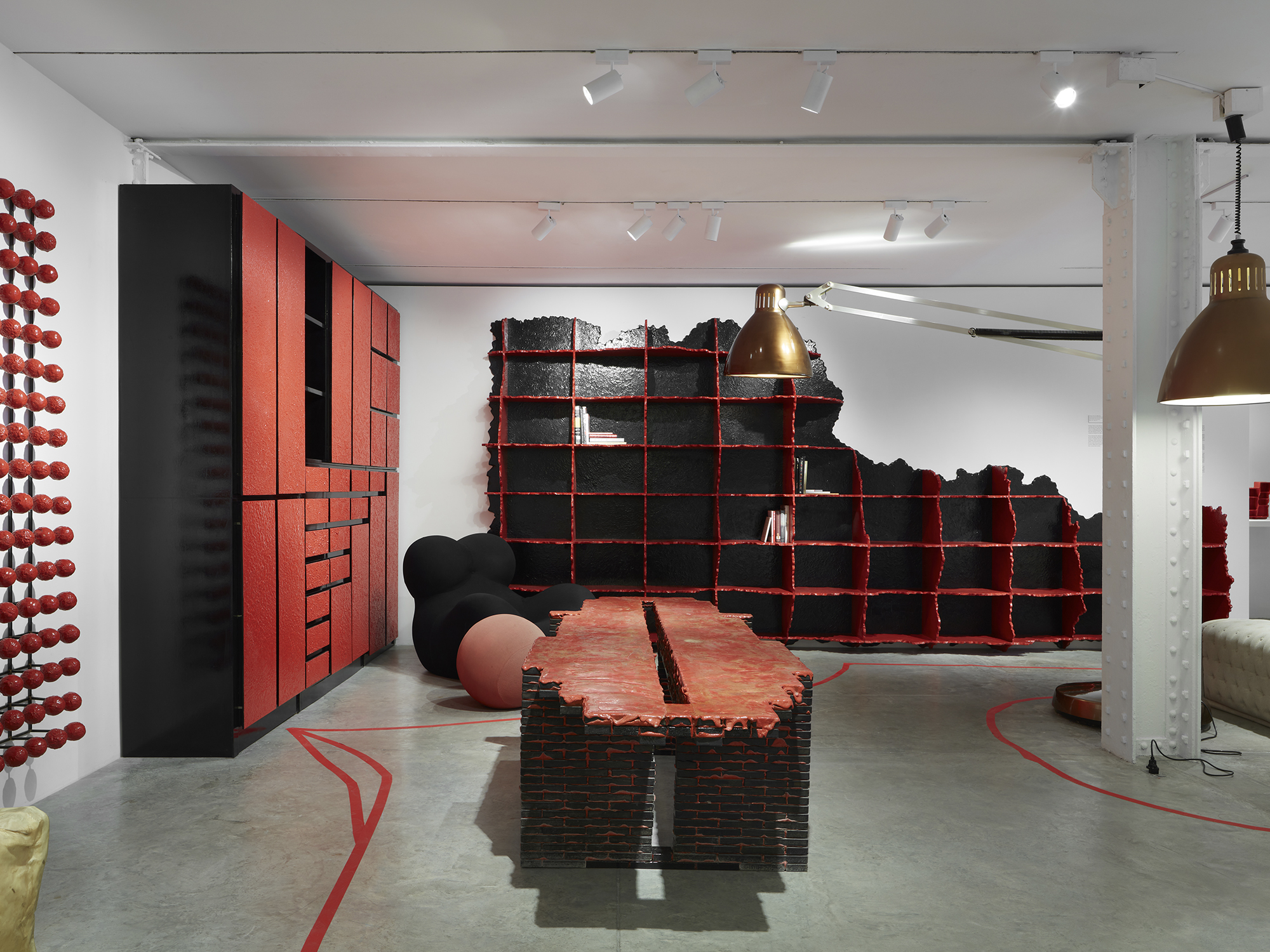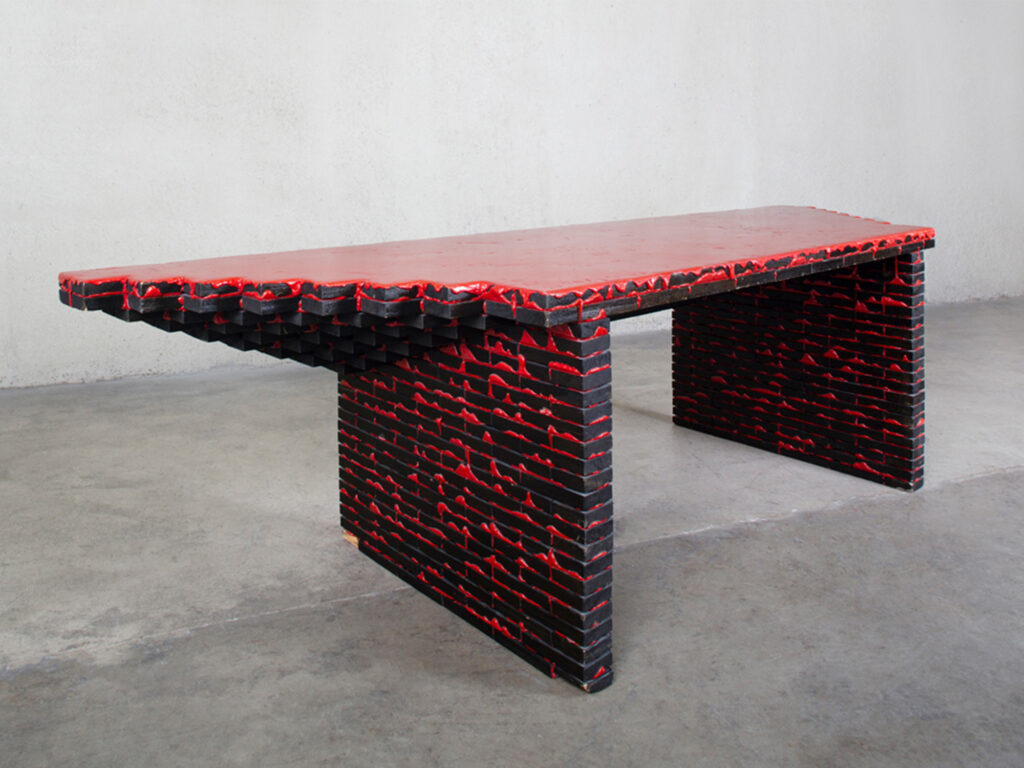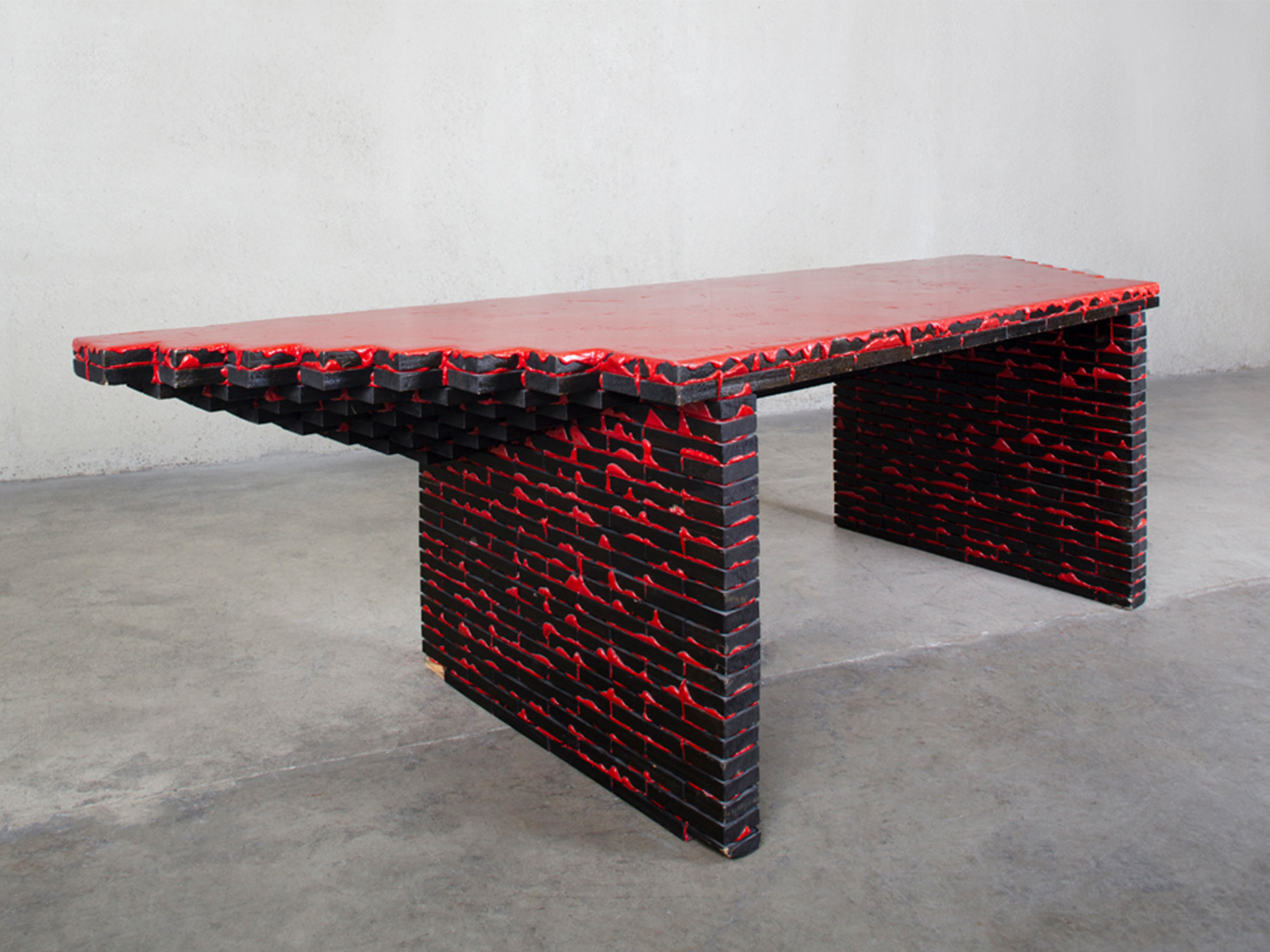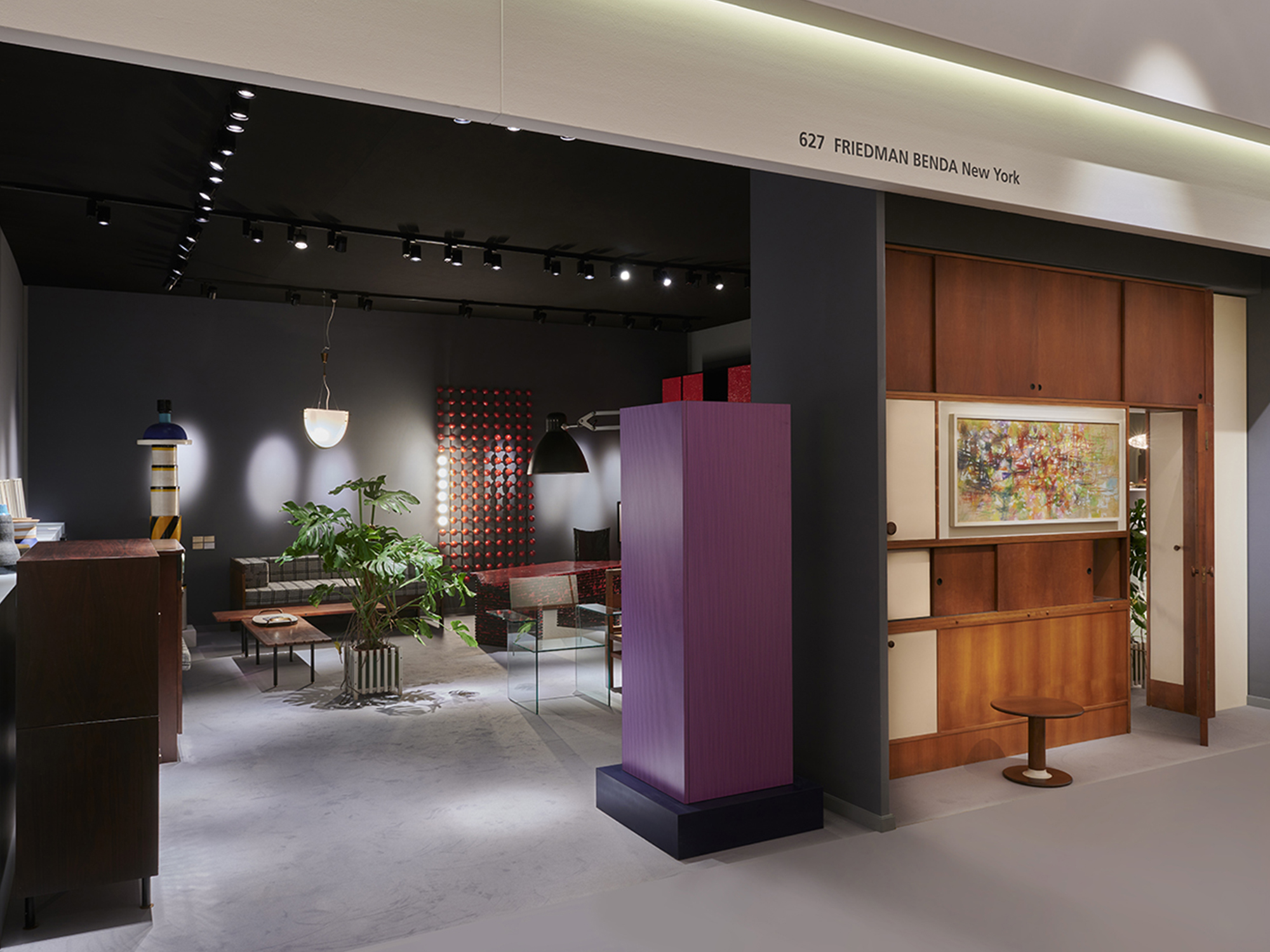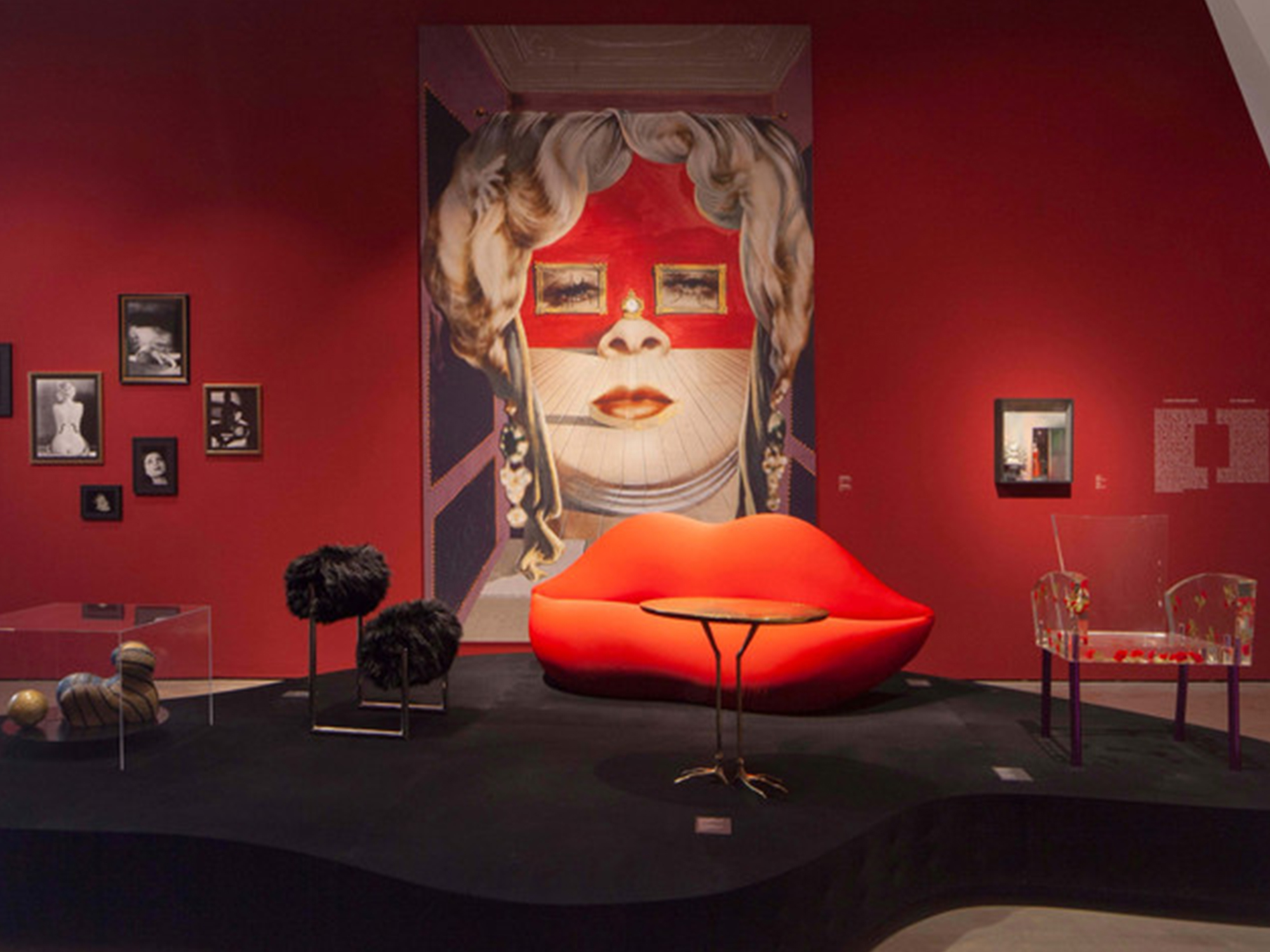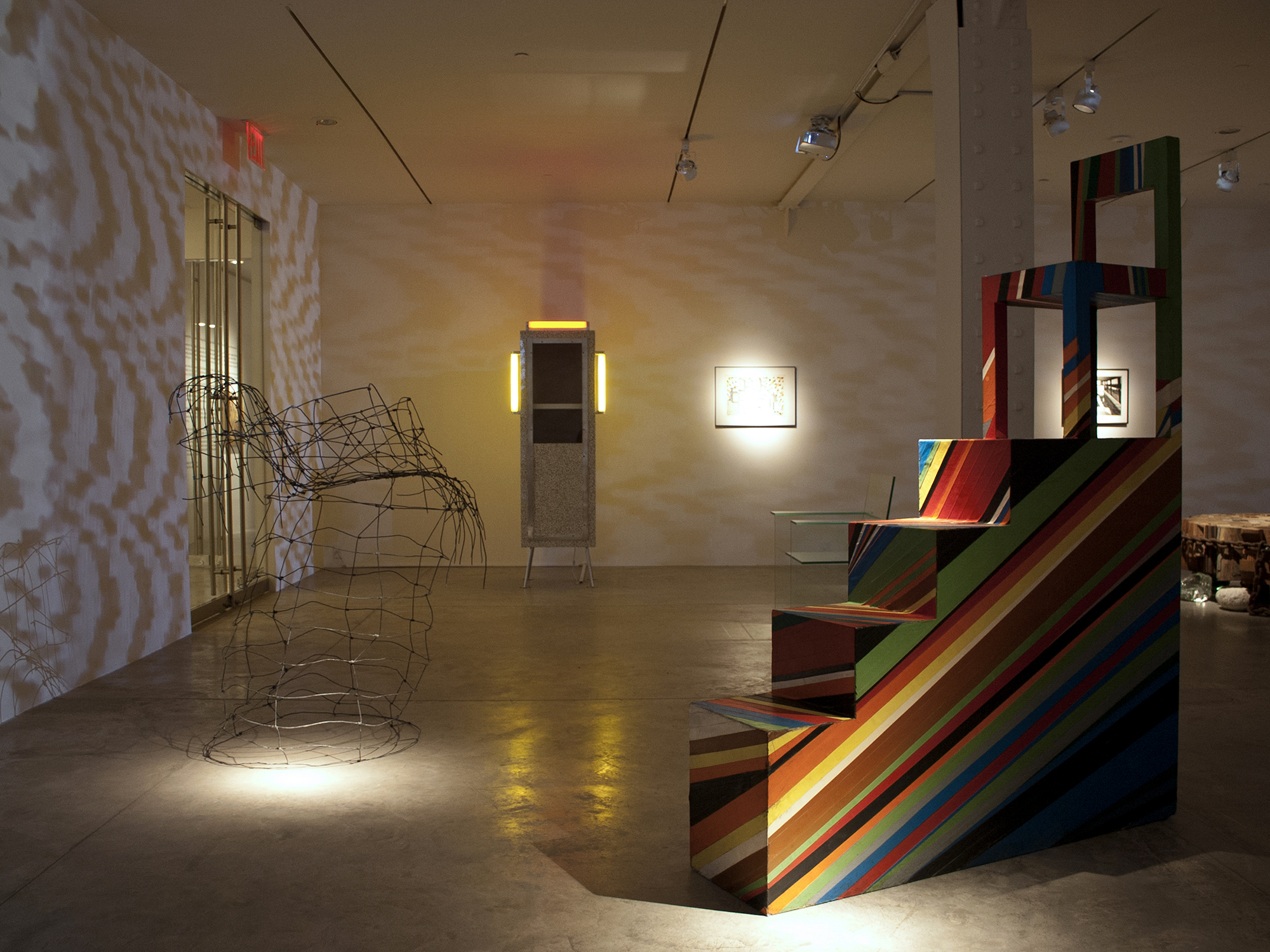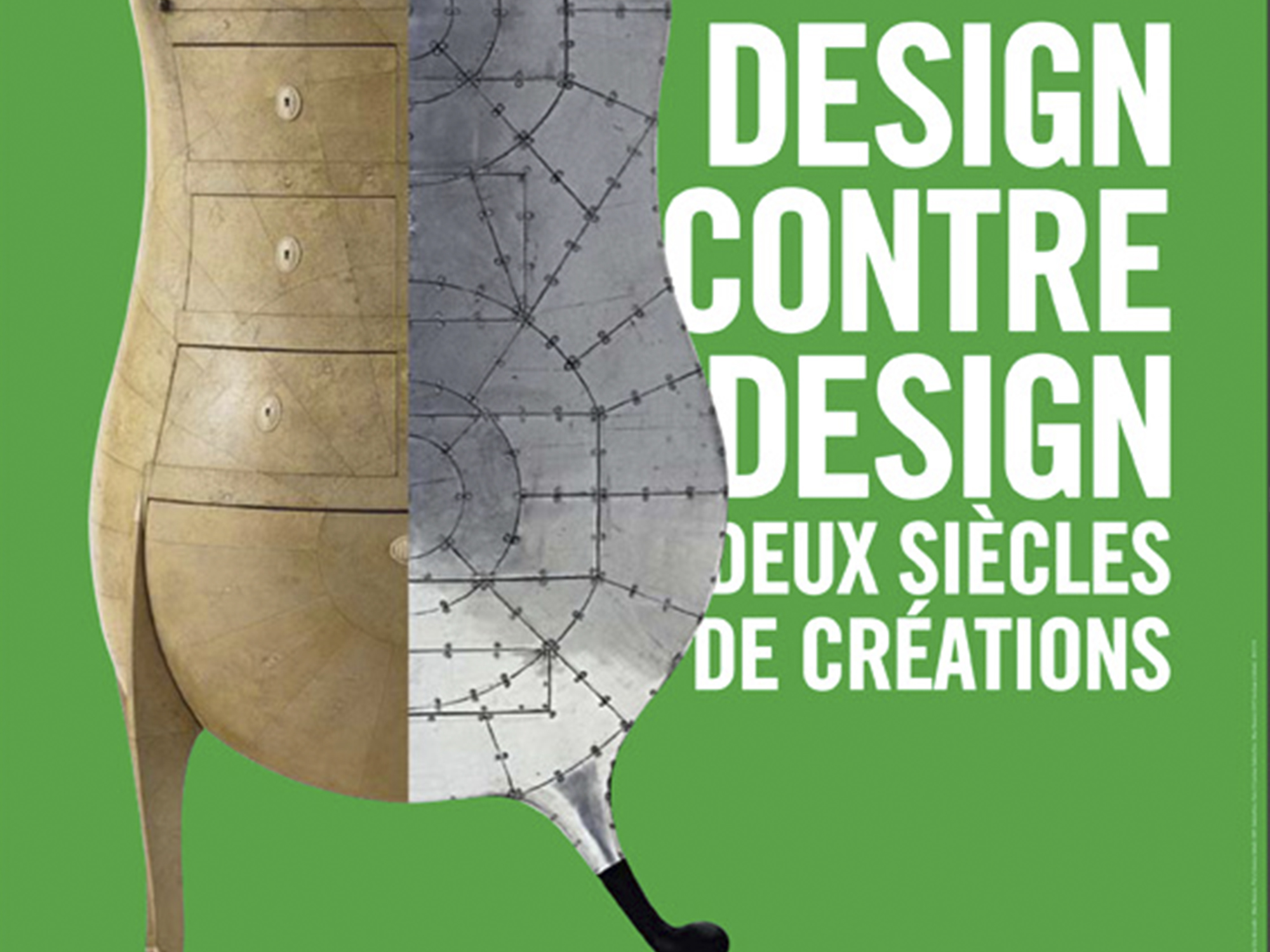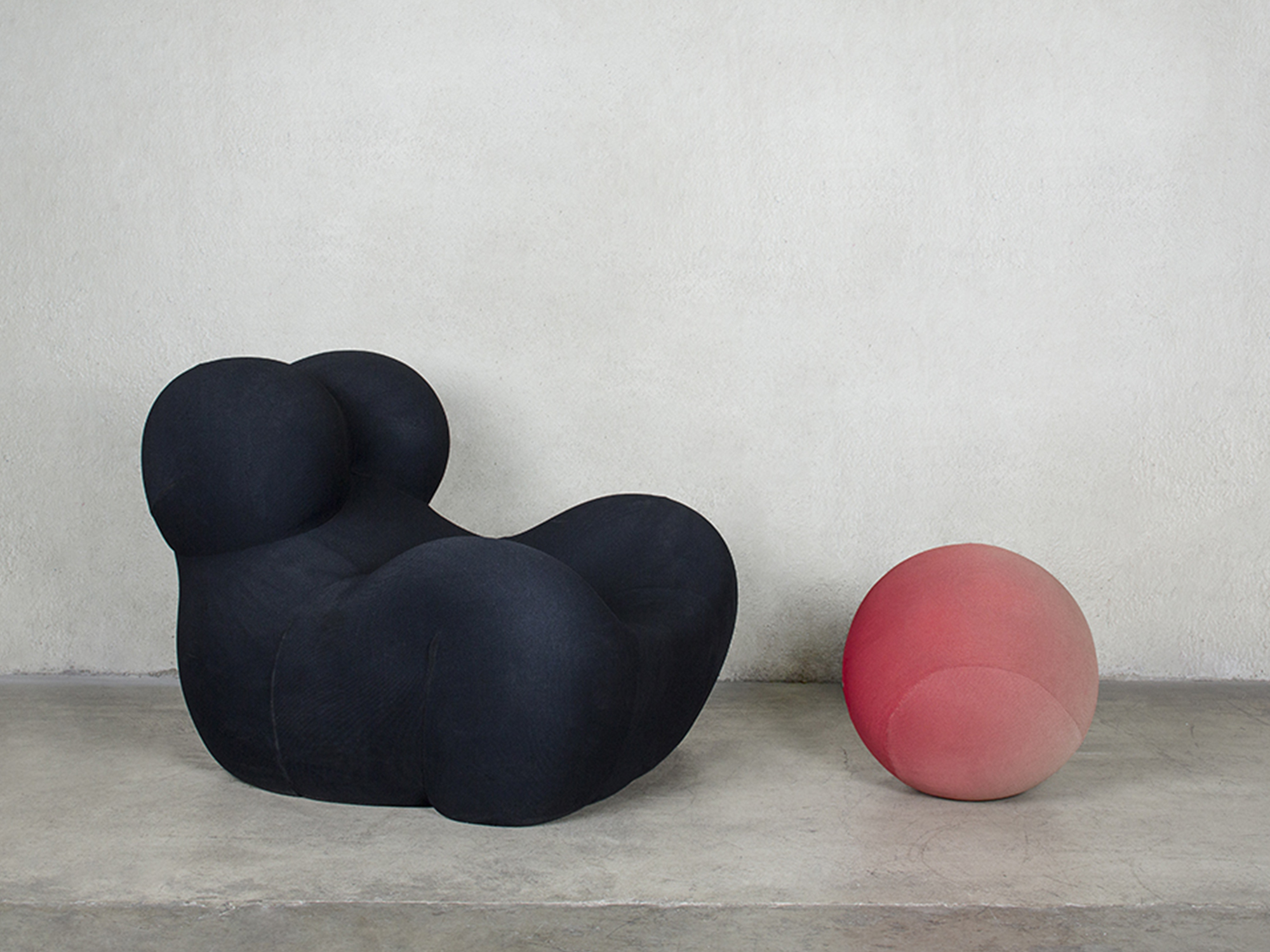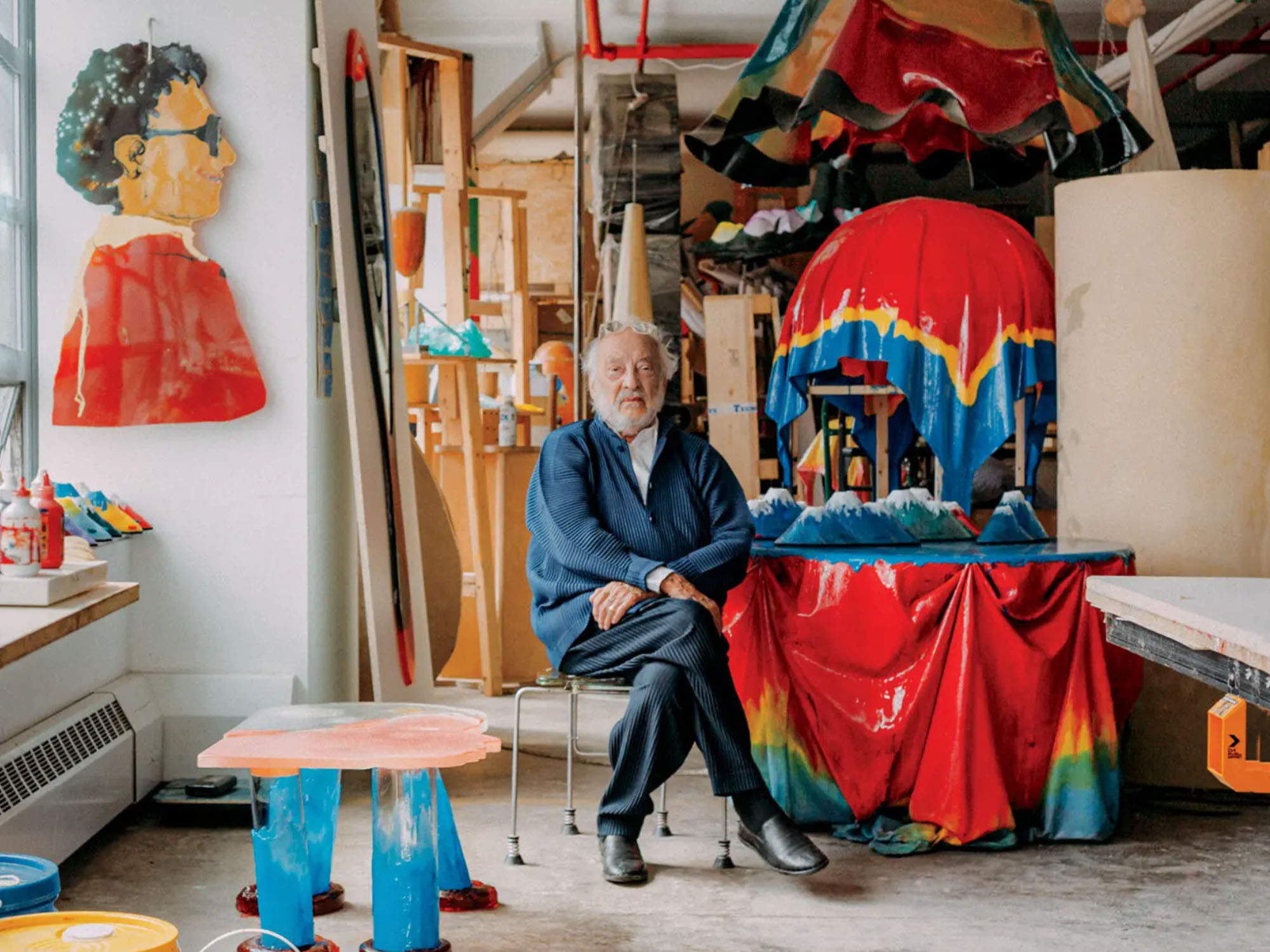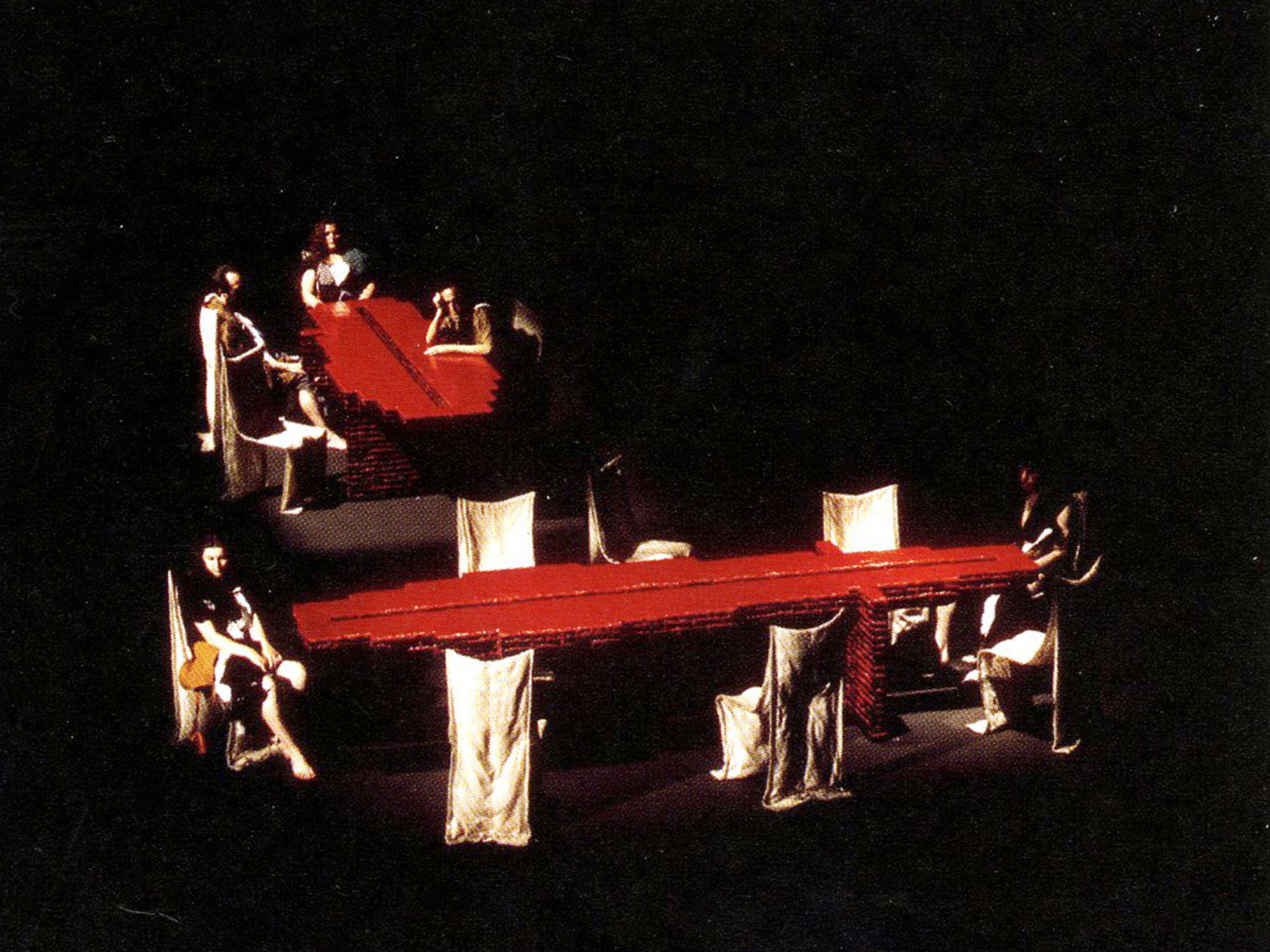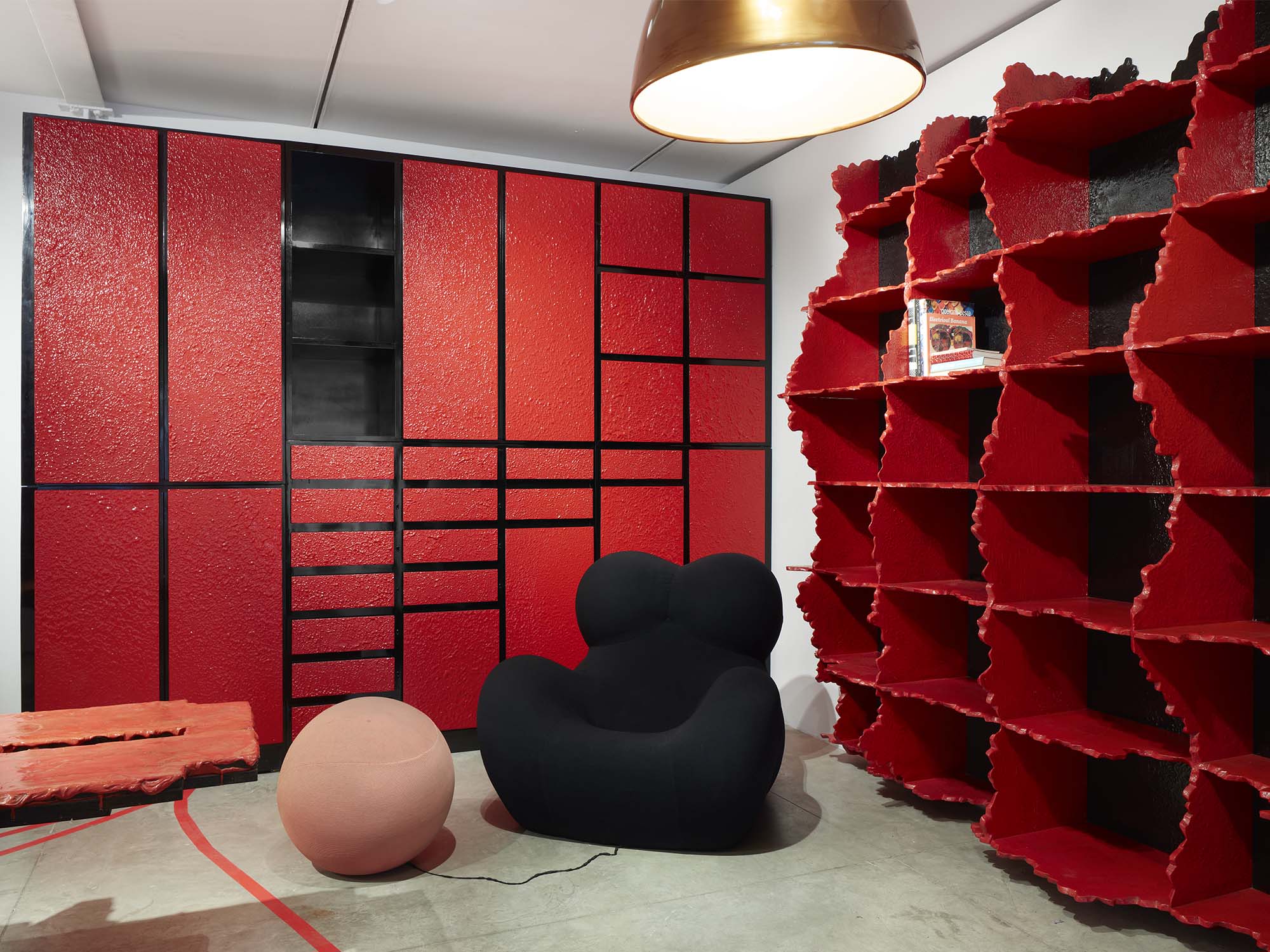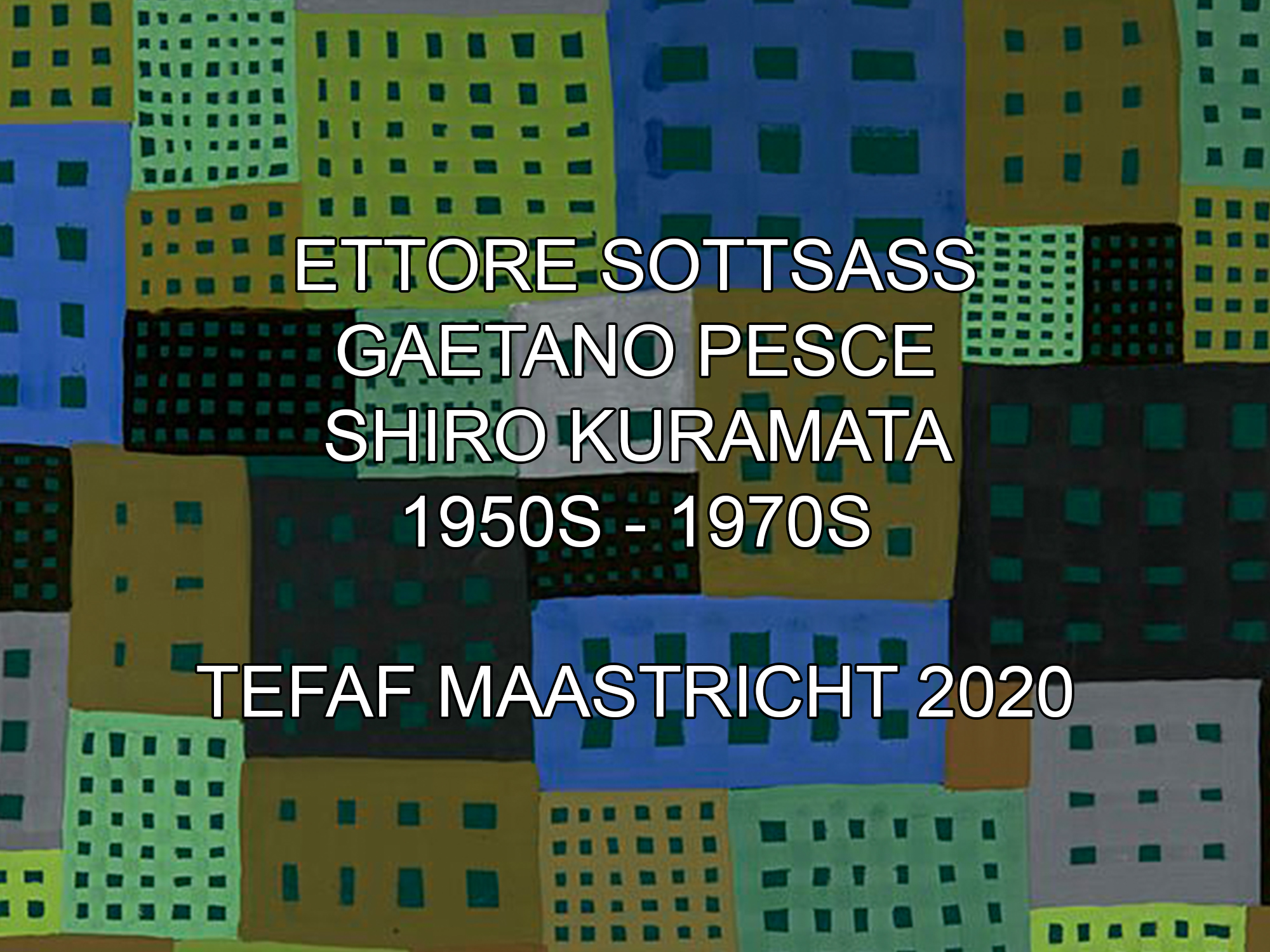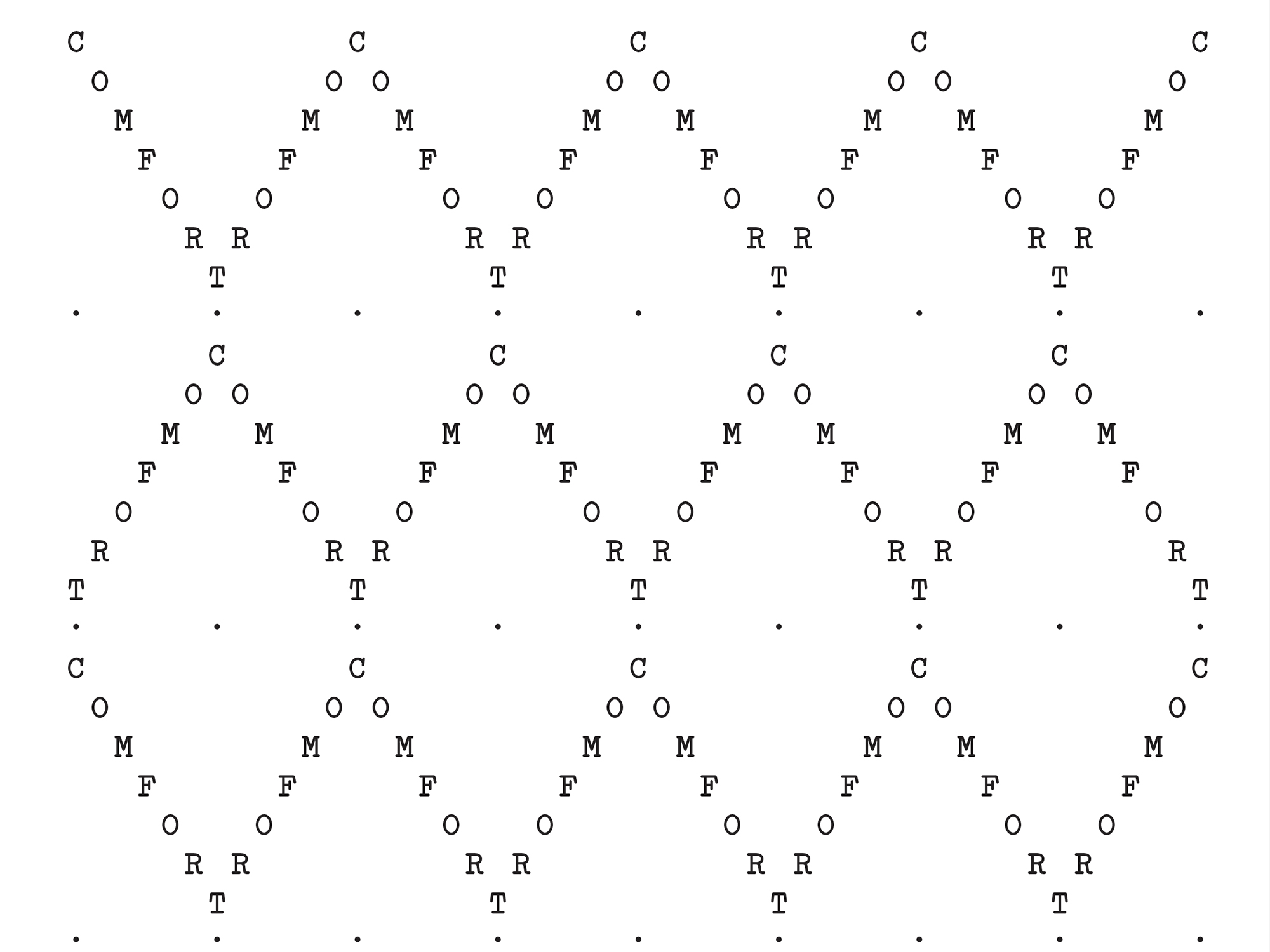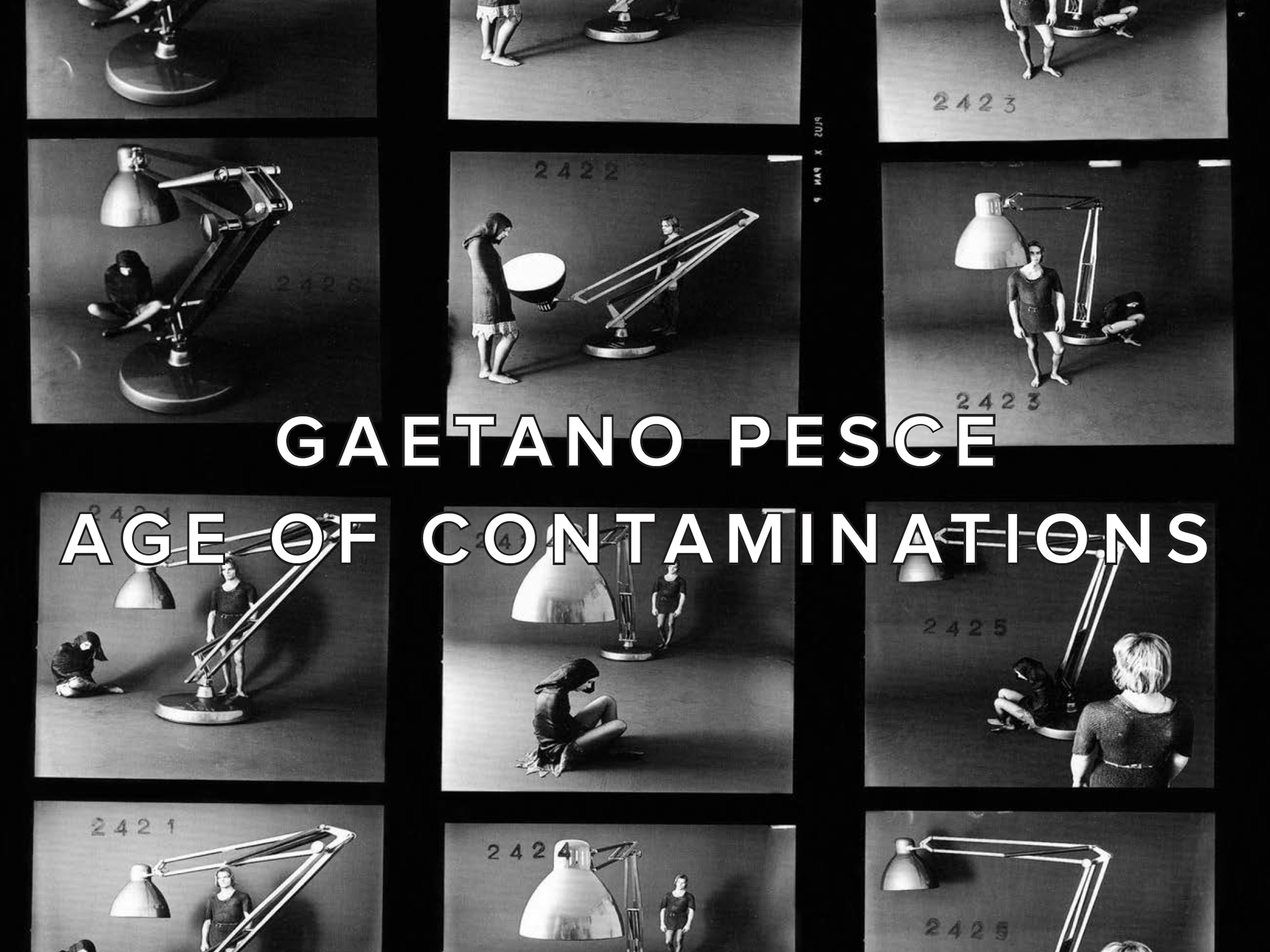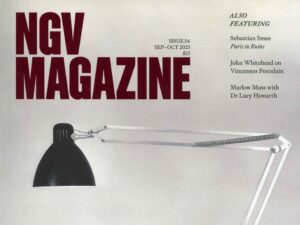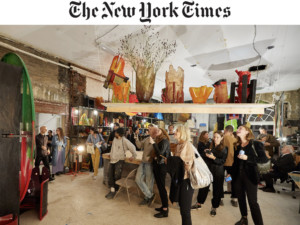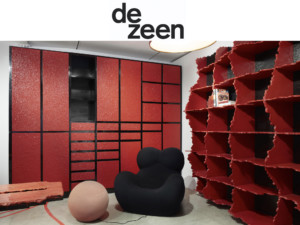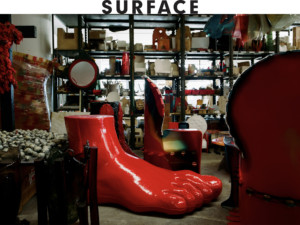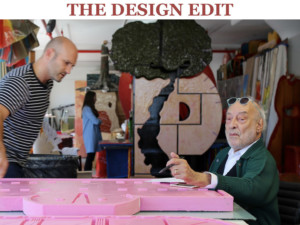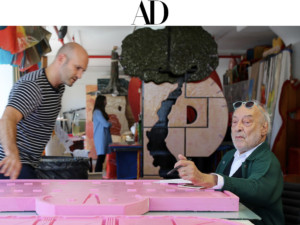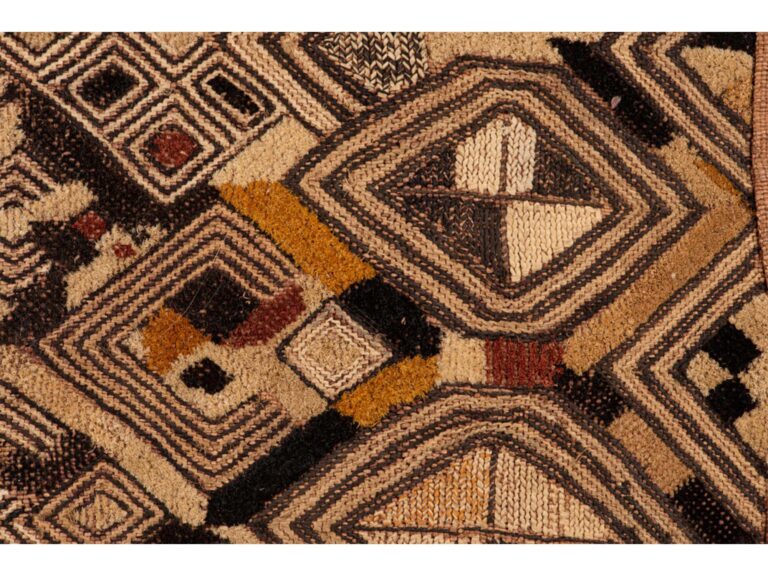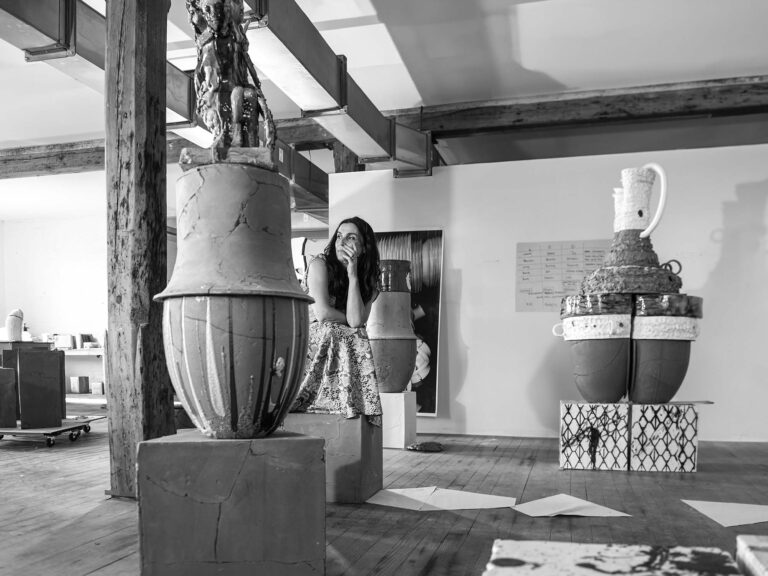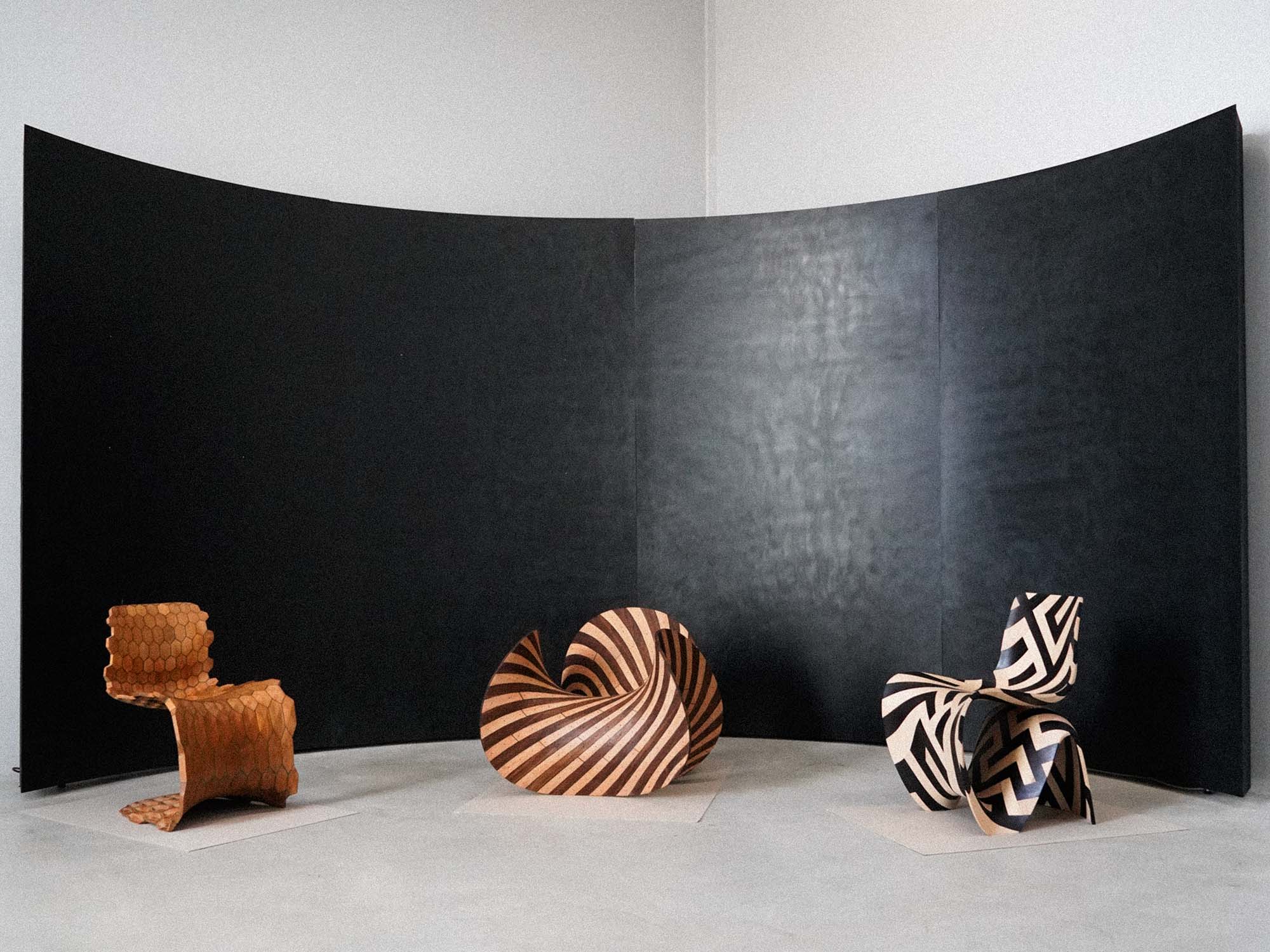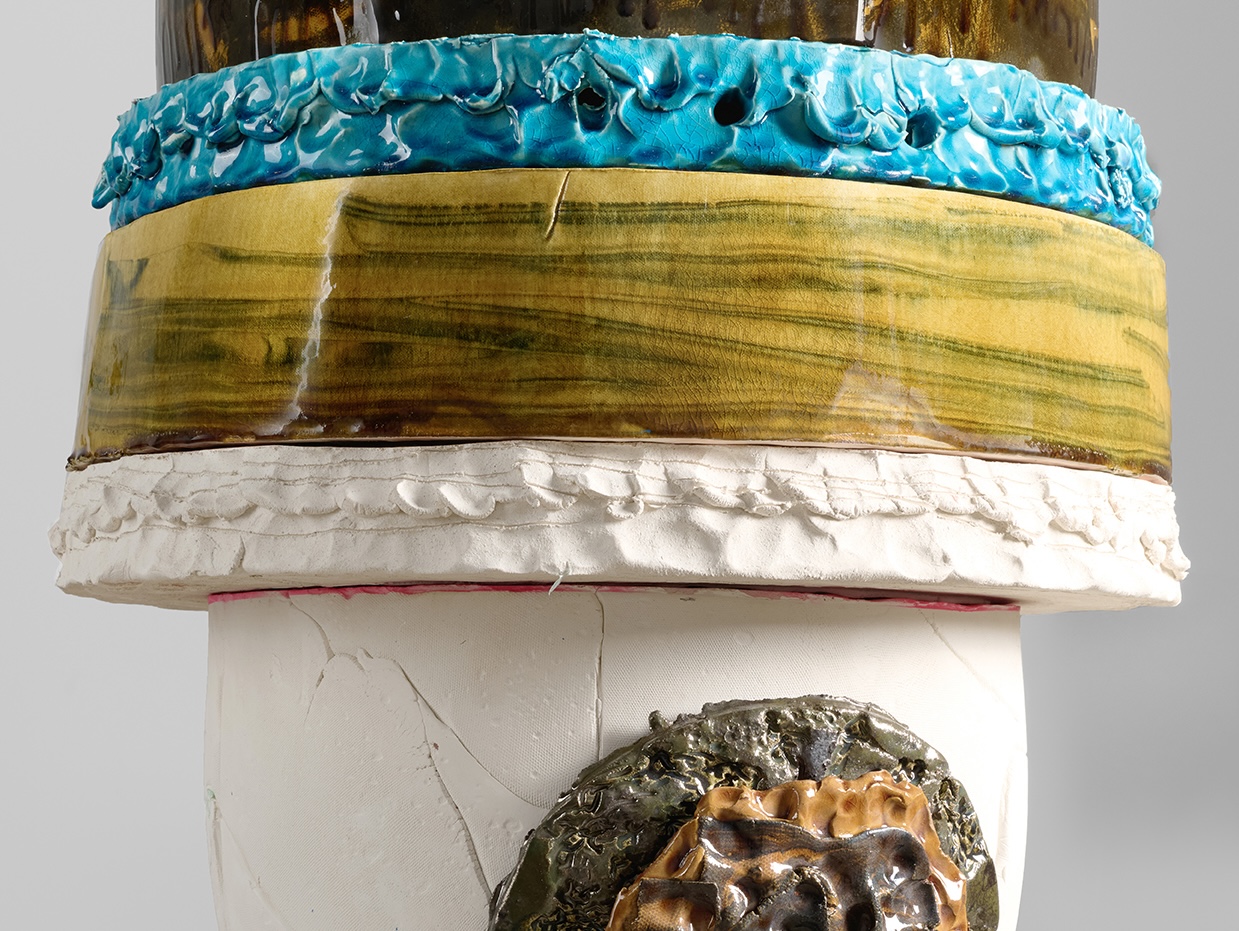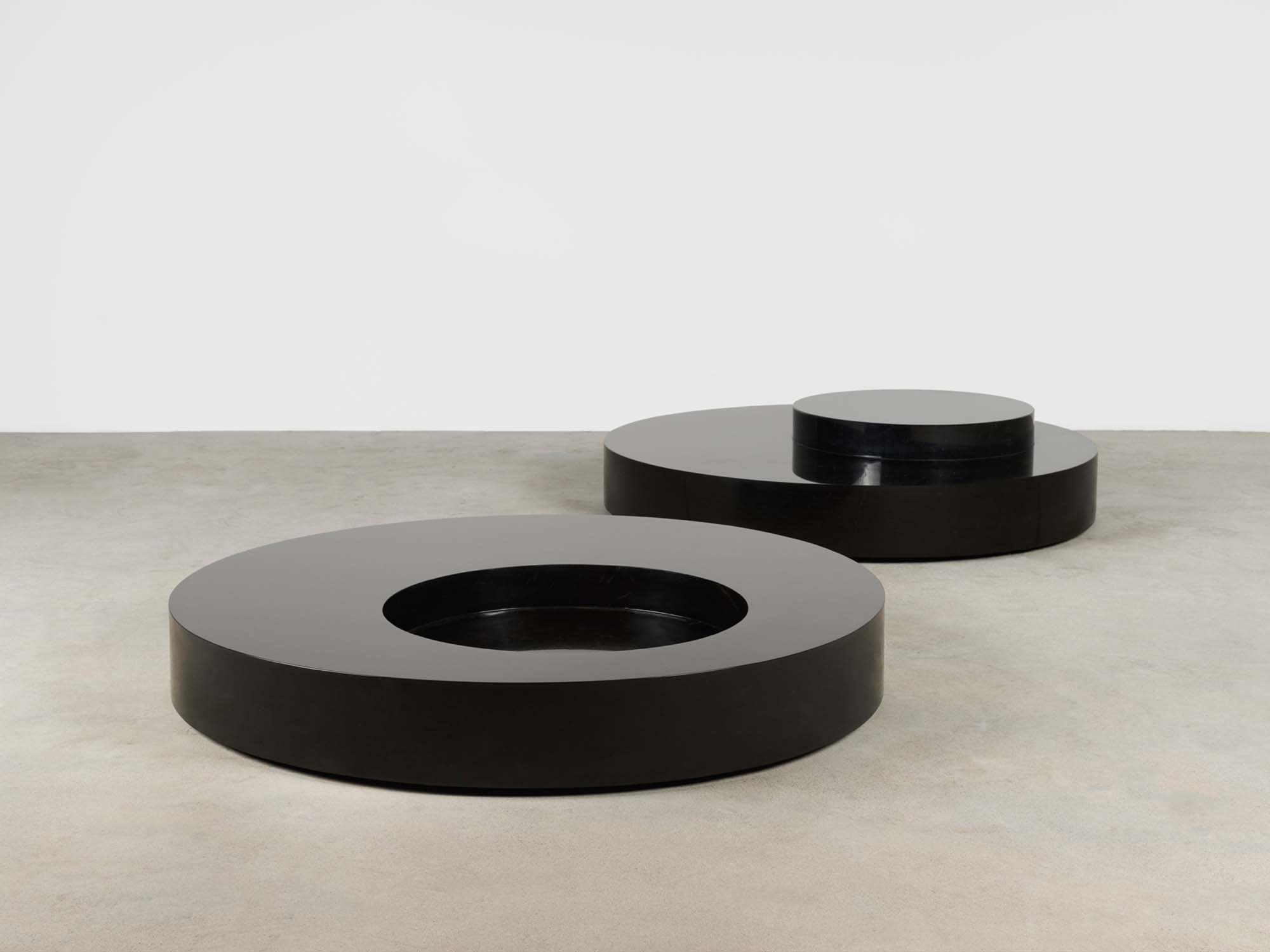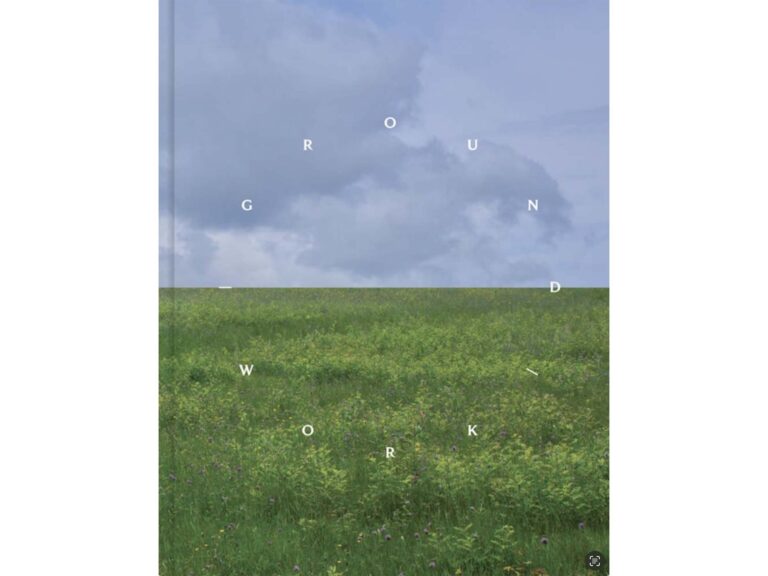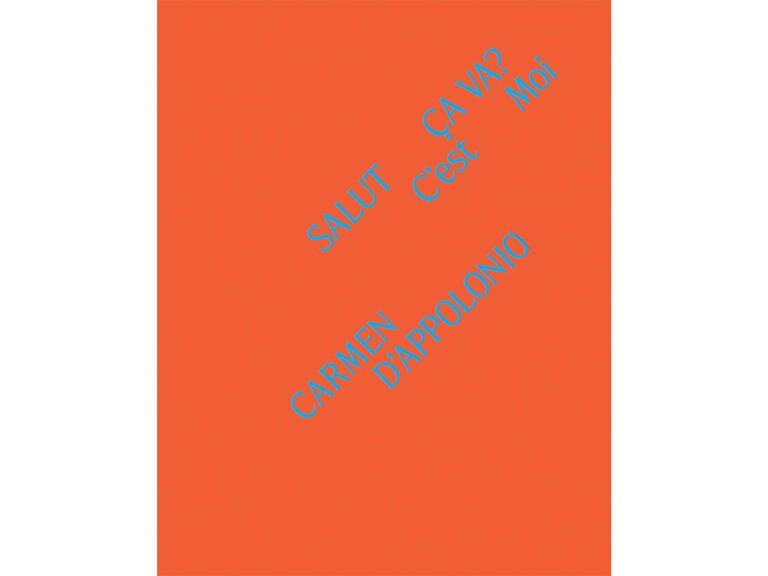Of the founding generation of radical designers, Gaetano Pesce’s influence remains unparalleled. By refusing to adhere to traditional boundaries between architecture, sculpture, and conceptual art, his cross-contamination between genres consequentially altered the landscape of design and was a catalyst for the establishment of the contemporary studio practice.
Born in 1939 in La Spezia, Italy, Pesce graduated with a degree in architecture from the University of Venice in 1965. Contemporaneous to the investigations of the Italian Arte Povera movement, he inserted himself into serial production situations, attempting to humanize manufacturing through variation and expression for B&B Italia, Cassina and Bracciodiferro. His radical experimentation with industrial and everyday materials such as polyurethanes and poured resins broke the mold of standardization. Inventing techniques that would produce variable results that invited flaws and mistakes, Pesce refused to follow the modernist ideology of regularity and perfection dominant at the time.
His architectural projects include the Organic Building of Osaka in Japan (1990), a precursor to the ‘living wall,’ “in which the “co-existence of greenery, architecture, and human beings,” is the concept. Perhaps his best known project is the design for the advertising agency TBWA\Chiat\Day’s offices in New York (1994), a radical experimental layout that is considered the first mobile office.
Pesce has taught at several institutions including Cooper Union in New York, and the Institut d’Architecture et d’Etudes Urbaines in Strasbourg. His work is included in the permanent collections of museums worldwide such as the Centre Pompidou, Paris; Metropolitan Museum of Art, New York, NY; Musée des Arts Decoratifs, Montreal; Musée des Arts Decoratifs, Paris; Museum of Modern Art, New York, NY and Museum of Modern Art, Turin. Pesce lives and works in New York, NY.
Gaetano Pesce passed away in 2024.
